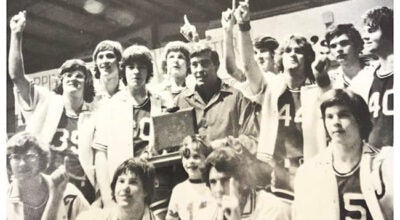Trinity teachers go high-tech
Published 12:00 am Saturday, March 5, 2011
NATCHEZ — The last time Trinity Episcopal’s head of school Cynthia Smith taught in a classroom, colored chalk was considered “high-tech.”
But much has changed since the 1980s, and Trinity has recently breached the exciting new world of Promethean boards, Smith said.
Trinity high school math teacher Nick Peterman displayed how the board can be used as a high-functioning white board when teaching how to multiply a polynomial by a monomial during his ninth-grade Algebra class on Friday.
Instead of being forced to crouch down or scoot over to work out a long problem, Peterman copied old work with a pointer and pasted it at the bottom of the screen with the click of a button, freeing up space to write comfortably without losing the steps of equation.
The board, which has Internet access, also lets Peterman record his lessons, giving students access to them at home through the Trinity website.
Eventually all teachers will have their own website linked to Trinity’s site, Peterman said.
Promethean boards have been installed in three classrooms thus far. Smith said three more, which were privately donated, will soon be installed in pre-kindergarten and kindergarten classrooms.
Smith said board members and teachers from Trinity observed teachers in West Baton Rouge Parish use Promethean boards, which led to the decision to integrate them in the classrooms at Trinity.
Peterman said the goal is to have boards in all the classrooms by August.
Peterman spoke to his class Friday about the importance of integrating technology into the classroom.
“You guys are already wired to digital learning,” he said.
Peterman said content in subjects like math will often be the same as always, but the way the content is delivered is changing.
Peterman asked his class why they prefer the boards to traditional lectures.
“A lot of us can relate to it better,” Jessa Novak said from the back of the class.
Peterman said the adjustment to technology is a big step for teachers, and teachers will have to work harder at making the step than students.
“This is how (teachers) like things (pointing to desks) — rows, columns, everybody sitting still,” Peterman told the class. “But educators (must) deliver changes to meet your needs.”
Peterman said teachers and students will be learning to use the boards together.
“In some ways we will have to meet in the middle,” Peterman said.
Peterman showed a video on the Promethean board about the effects of technology and globalization on the current and future job market.
The video said the average person will have between 10 to 14 jobs by the time they are 38 years old. The video also said many of the jobs students of today will compete for in the future are jobs that do not yet exist.
Peterman said knowledge of how to access content has become as important as knowing the content itself in today’s world.
The boards will also help engage the class, he said.
Peterman welcomed his students bring video clips to class to show on the Promethean boards if they relate to the subject matter.
“If it adds value to what you’re learning, you’re going to be engaged,” Peterman said.
He said “paying attention” is important, but when students have an opportunity to “think about” what they are learning by applying it to various kinds of content, the classroom can be more effective.
Peterman told the class they were at the beginning steps of what will be a big change in the way they learn at school.
“It’s a good change,” said student Gabrielle Knight.
Peterman said training will also be an important element of integrating the boards, an element to which Trinity is committed.
“(Promethean board) doesn’t make (the teacher’s) jobs easier, it makes us more effective,” he said.
In addition, Peterman said there is never a shortage of volunteers to go up the board and solve a problem with a neat-o, high-tech pen.
More Trinity sports





